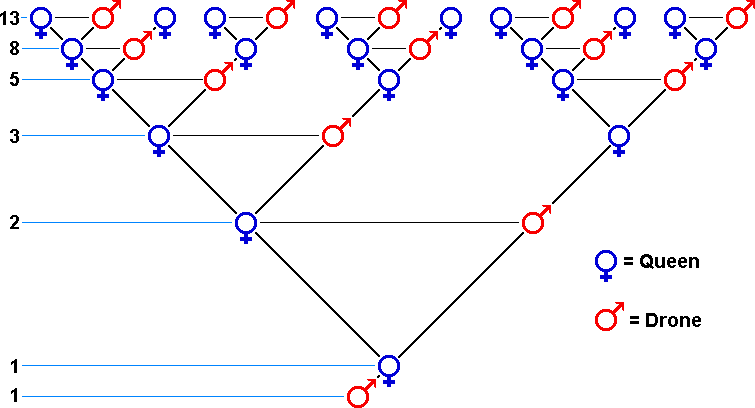Mathematical marvels
One of my earlier series of work was based on the exploration of the Golden Ratio and the Fibonacci sequence. I created a number of two and three-dimensional works that depicted these separate but related concepts. One of the works, Hive depicts the relationship between the Golden Ratio, the Fibonacci sequence and the family tree of honeybees.
Hive, oil, encaustic wax, intaglio and relief prints on rice paper, bee hive material, all mounted on cradled wood panel, 16” x 16”
The Fibonacci sequence of numbers goes like this: 0 1 1 2 3 5 8 13 21 34 45 79… Each number is the sum of two preceding numbers. The growth of a honeybee family tree will follow the Fibonacci sequence because of its unique reproductive pattern. There is only one mother in the hive - the queen bee. A male bee (drone) is born from an unfertilized queen’s egg. The drone does not have a father. Female bees (worker bees) have two parents - a drone and the queen.
This table shows the ancestry of the drone and worker bees. Note the number sequences.
I find it easier to view this sequence graphically:
(source: http://www.dave-cushman.net/bee/fibonacci.html)
So, how is the Fibonacci sequence connected to the Golden Ratio? Well, as the sequence progresses, the ratio between each number approaches 1.618 (eg. 13 divided by 8 equals 1.625). This number is considered the Golden Ratio. Just to give you a bit more to chew on, the Fibonacci sequence and the Golden Ratio can be graphed:
(source: https://www2.nau.edu/lrm22/lessons/fibonacci/fibonacci.html)
Hive
Hive (detail)





